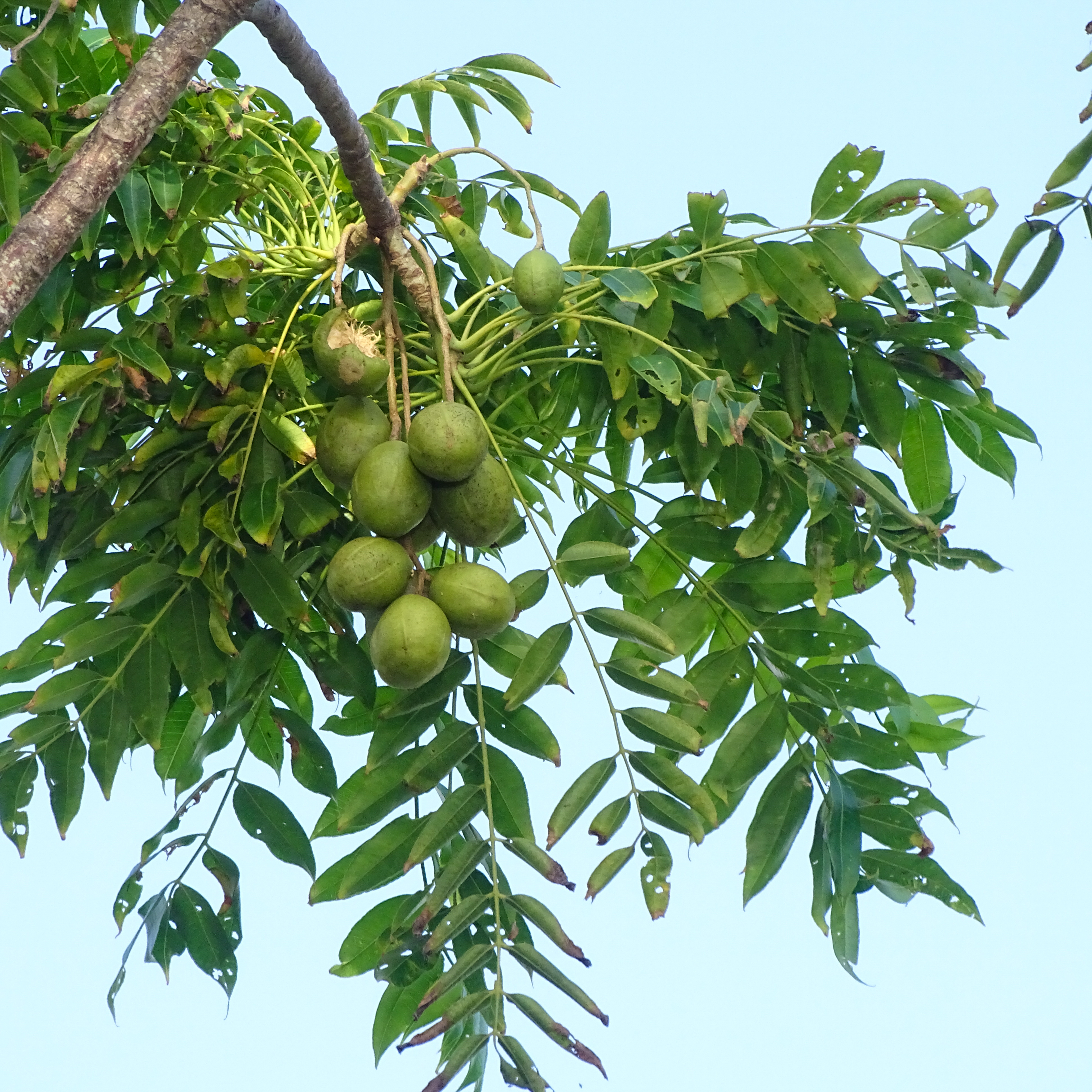Description
Ambarella, also known as Spondias dulcis, is a tropical fruit tree that thrives in warm, humid climates. In Sri Lanka, the cultivation of this versatile plant is gaining popularity due to its nutritional benefits and adaptability to local conditions.
The tree may grow up to 30 m tall but is more often 15 m tall in cultivation. The trunk is 60 cm across and can have buttresses. The bark is fairly smooth. The wood is soft and twigs break off easily. The leaf is made up of 4 - 12 pairs of leaflets which have fine teeth around the edge. The leaves are 20-30 cm long. This plant cannot tolerate cold weather but is versatile and easy to maintain in humid climates.
Planting requirements
Planting season: May to August
Planting conditions:
| Propagation | Seeds are most commonly used but propagation from tree cuttings are recommended as seed grown plants tend to give smaller and sour tasting fruit |
|---|---|
| Planting method | Can be grown in a container or on the ground. To plant in the ground, dig a hole three times as wide and just as deep as the root ball. Plant firmly in the ground and cover the top layer of soil with 2-3 inches of mulch. Do not plant in windy areas |
| Soil | Grows in any type of soil as long as they are well draining. Does not need high nutrition, though it grows well when fed properly. They grow well in acidic to slightly alkaline soils with a pH of 5.5-7.5. |
| Water | Young plants should be watered more often than the older plants |
| Light | Requires full to partial sunshine (4-6 hours of sunlight each day) |
Growing conditions:
| Temperatures | Grows best in humid tropical and subtropical climates |
|---|---|
| Soil | Cover the top layer of soil with mulch |
| Water | One to two times per week for the first few months. Then once a week during dry periods |
| Pruning | Young trees require regular pruning and thinning of flowers and fruits. The plant tends to overgrow these and as a result can become weak and stunted |
| Weed control | Mulching helps control weeds and retains soil moisture |
Harvesting
Can be picked when green or golden yellow.
Curing
Fruits can be eaten fresh off the tree. For storage, cure green fruits at room temperature for a week to allow them to ripen further.
Storage
Ripe fruit cannot be stored over long periods of time but can be preserved as jam, chutney, sauce, etc.
Protecting your plants
Pest control
Pest type:
- Caribbean fruit fly: small and orange brown in colour
- Scale insects: flat and round, red, brown or green coloured insects
Symptoms:
- Caribbean fruit fly: Lays eggs in fruit resulting in little holes
- Scale insects: sticky honeydew on leaves that causes black sooty mold to cover the leaf
Control method:
- Caribbean fruit fly: Bag the fruit on the tree for protection
- Scale insects: Spray oil
Disease Control
Disease type:
- Root rot: Occurs through overwatering and planting in soil that doesn't drain well
- Fruit rot: Caused by fruit flies wounding the fruit.
Symptoms:
- Root rot: Wilting
- Fruit rot: Dark spots on fruits
Management:
- Root rot: Avoid overhead irrigation, follow proper planting instructions, and bag the fruits on the tree for extra protection.
- Fruit rot: Bag the fruits on the tree for extra protection.
Sources
In addition to our General List of Sources (link), we used these specific references:
- Wikipedia
- Food Plant Solutions Rotary Action Group
- tipstreeplanting.com
- https://www.epicgardening.com/june-plum-tree/
- https://www.valaitamil.com/ambarella-tamil-dictionary203764.html
- https://epicureanearth.com/all-about-the-ambarella/
- https://www.epicgardening.com/june-plum-tree/
- https://en.wikipedia.org/wiki/Spondias_dulcis
